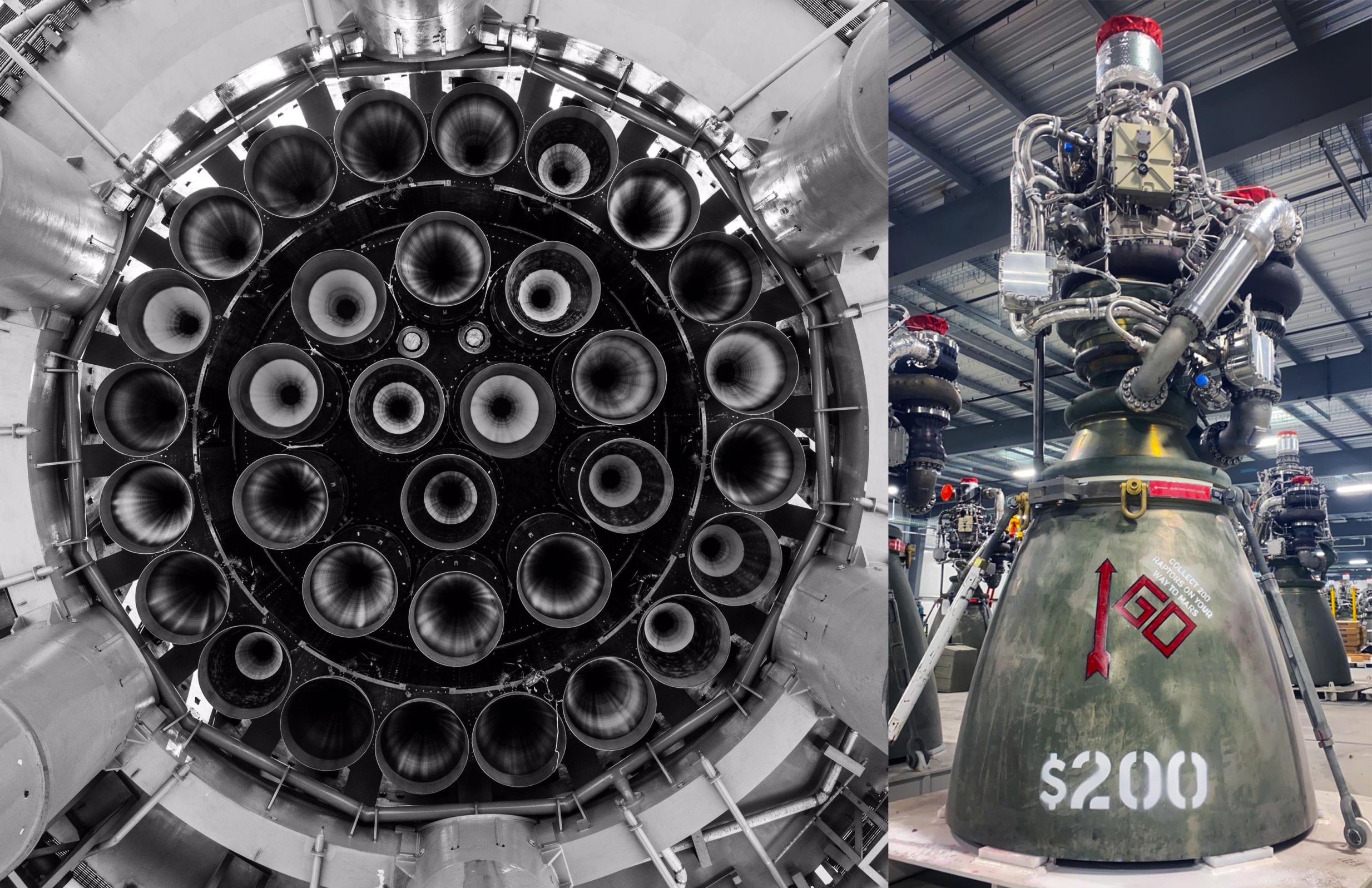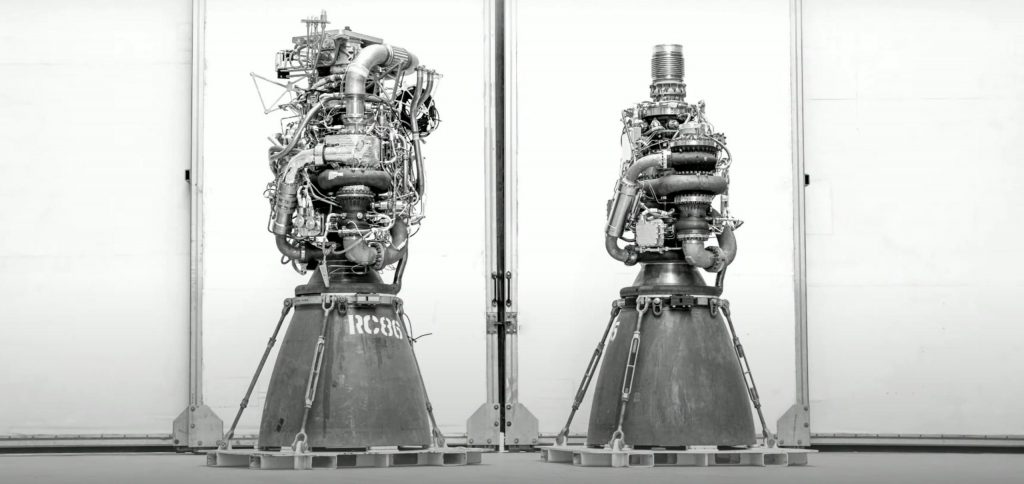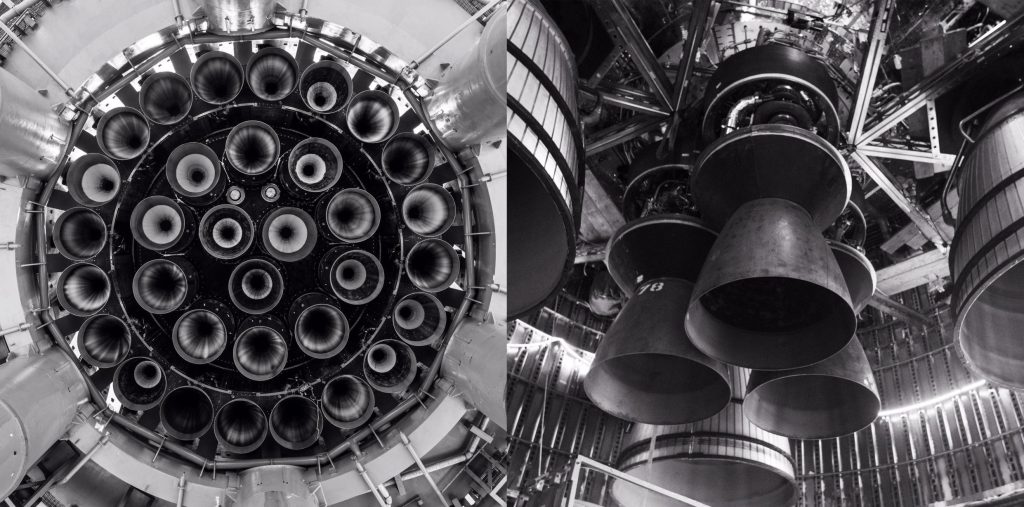

News
SpaceX ships Starship’s 200th upgraded Raptor engine
A day after revealing the completion of the 200th Falcon upper stage and Merlin Vacuum engine, SpaceX has announced that it also recently finished building Starship’s 200th upgraded Raptor engine.
Starship – and Raptor, by extension – has yet to reach orbit and is likely years away from scratching the surface of the established success and reliability of the Falcon upper stage and MVac. But compared to MVac, Raptor is more complex, more efficient, more than twice as powerful, experiences far more stress, and is three times younger.
And Raptor 2 isn’t the first version of the engine. Before SpaceX shipped its first Raptor 2 prototype, it manufactured 100 Raptor 1 engines between the start of full-scale testing in February 2018 and July 2021. By late 2021 or early 2022, when Raptor 2 took over, the total number of Raptor 1 engines produced likely reached somewhere between 125 and 150 – impressive but pale in comparison to SpaceX’s Raptor 2 ambitions.
From the start, Raptor 2’s purpose was to make future Raptors easier, faster, and cheaper to manufacture. The ultimate goal is to eventually reduce the cost of Raptor 2 production to $1000 per ton of thrust, or $230,000 at Raptor 2’s current target of 230 tons (~510,000 lbf) of thrust. As of mid-2019, Musk reported that each early Raptor 1 prototype cost “more” than $2 million for what would turn out to be 185 tons of thrust (~$11,000 per ton). It’s not clear if that ever appreciably changed.
In response, SpaceX strived to make Raptor 2 simpler wherever possible, removing a large part of the maze of primary, secondary, and tertiary plumbing. In 2022, CEO Elon Musk confirmed that SpaceX had even removed a complex torch igniter system for Raptor 2’s main combustion chamber. All that simplification made Raptor 2 much easier to build in theory, and SpaceX’s production figures have more than confirmed that theory. Despite those simplifications, SpaceX was also able to boost Raptor 2’s thrust by 25% by sacrificing just 1% of Raptor 1’s efficiency.

Beginning with its first delivery in February 2018, SpaceX produced the first 100 Raptor 1 engines in about 36 months. In the first 11 to 12 months of Raptor 2 production, SpaceX has delivered 200 engines. That translates to at least six times the average throughput, but the true figure is even higher. In June 2019, Musk stated that SpaceX was “aiming [to build a Raptor] engine every 12 hours by end of year.” As is usually the case, that progress took far longer to realize. But in October 2022, a senior NASA Artemis Program official revealed that SpaceX recently achieved sustained production of one Raptor 2 engine per day for a full week.
Such a high rate – likely making Raptor one of the fastest-produced orbital-class rocket engines in history – is required because SpaceX’s next-generation Starship rocket needs a huge amount of engines. The Starship upper stage currently requires three sea-level-optimized Raptors and three vacuum-optimized Raptors, and SpaceX has plans to increase that to nine engines total. Starship’s Super Heavy booster is powered by 33 sea-level Raptors.

Orbital-class versions of Starship and Super Heavy have never flown, let alone demonstrated successful recovery or reuse, so SpaceX has to operate under the assumption that every orbital test flight will consume 39 Raptors. Even after the reuse of Super Heavy boosters or Starships becomes viable, taking significant strain off of Raptor demand, SpaceX wants to manufacture a fleet of hundreds or even thousands of Starships and a similarly massive number of boosters. To outfit that massive fleet, SpaceX would have to mass-produce orbital-class Raptor engines at a scale that’s never been attempted.
But it will likely be years – if not a decade or longer – before SpaceX is in a position to attempt to create that mega-fleet. If the Raptor 2 engines SpaceX is already building are modestly reliable and reusable, and it doesn’t take more than 5-10 orbital test flights to begin reusing Starships and Super Heavy boosters, a production rate of one engine per day is arguably good enough to support the next few years of realistic engine demand.
SpaceX’s first orbital Starship launch attempt could occur as early as December 2022, although Q1 2023 is more likely. SpaceX currently has permission for up to five orbital Starship launches per year out of its Starbase, Texas facilities and will likely try to take full advantage of that with several back-to-back test flights in a period of 6-12 months.
News
Tesla begins Robotaxi certification push in Arizona: report
Tesla seems serious about expanding its Robotaxi service to several states in the coming months.

Tesla has initiated discussions with Arizona transportation regulators to certify its driverless Robotaxi service in the state, as per a recent report from Bloomberg News. The move follows Tesla’s launch of its Robotaxi pilot program in Austin, Texas, as well as CEO Elon Musk’s recent comments about the service’s expansion in the Bay Area.
The Arizona Department of Transportation confirmed to Bloomberg that Tesla has reached out to begin the certification process for autonomous ride-sharing operations in the state. While details remain limited, the outreach suggests that Tesla is serious about expanding its driverless Robotaxi service to several territories in the coming months.
The Arizona development comes as Tesla prepares to expand its service area in Austin this weekend, as per CEO Elon Musk in a post on X. Musk also stated that Tesla is targeting the San Francisco Bay Area as its next major market, with a potential launch “in a month or two,” pending regulatory approvals.
Tesla first launched its autonomous ride-hailing program on June 22 in Austin with a small fleet of Model Y vehicles, accompanied by a Tesla employee in the passenger seat to monitor safety. While still classified as a test, Musk has said the program will expand to about 1,000 vehicles in the coming months. Tesla will later upgrade its Robotaxi fleet with the Cyercab, a two-seater that is designed without a steering wheel.
Sightings of Cybercab castings around the Giga Texas complex suggests that Tesla may be ramping the initial trial production of the self-driving two-seater. Tesla, for its part, has noted in the past that volume production of the Cybercab is expected to start sometime next year.
In California, Tesla has already applied for a transportation charter-party carrier permit from the state’s Public Utilities Commission. The company is reportedly taking a phased approach to operating in California, with the Robotaxi service starting with pre-arranged rides for employees in vehicles with safety drivers.
News
Tesla sets November 6 date for 2025 Annual Shareholder Meeting
The automaker announced the date on Thursday in a Form 8-K.

Tesla has scheduled its 2025 annual shareholder meeting for November 6, addressing investor concerns that the company was nearing a legal deadline to hold the event.
The automaker announced the date on Thursday in a Form 8-K submitted to the United States Securities and Exchange Commission (SEC). The company also listed a new proposal submission deadline of July 31 for items to be included in the proxy statement.
Tesla’s announcement followed calls from a group of 27 shareholders, including the leaders of large public pension funds, which urged Tesla’s board to formally set the meeting date, as noted in a report from The Wall Street Journal.
The group noted that under Texas law, where Tesla is now incorporated, companies must hold annual meetings within 13 months of the last one if requested by shareholders. Tesla’s previous annual shareholder meeting was held on June 13, 2024, which placed the July 13 deadline in focus.
Tesla originally stated in its 2024 annual report that it would file its proxy statement by the end of April. However, an amended filing on April 30 indicated that the Board of Directors had not yet finalized a meeting date, at least at the time.
The April filing also confirmed that Tesla’s board had formed a special committee to evaluate certain matters related to CEO Elon Musk’s compensation plan. Musk’s CEO performance award remains at the center of a lengthy legal dispute in Delaware, Tesla’s former state of incorporation.
Due to the aftermath of Musk’s legal dispute about his compensation plan in Delaware, he has not been paid for his work at Tesla for several years. Musk, for his part, has noted that he is more concerned about his voting stake in Tesla than his actual salary.
At last year’s annual meeting, TSLA shareholders voted to reapprove Elon Musk’s compensation plan and ratified Tesla’s decision to relocate its legal domicile from Delaware to Texas.
Elon Musk
Grok coming to Tesla vehicles next week “at the latest:” Elon Musk
Grok’s rollout to Tesla vehicles is expected to begin next week at the latest.

Elon Musk announced on Thursday that Grok, the large language model developed by his startup xAI, will soon be available in Tesla vehicles. Grok’s rollout to Tesla vehicles is expected to begin next week at the latest, further deepening the ties between the two Elon Musk-led companies.
Tesla–xAI synergy
Musk confirmed the news on X shortly after livestreaming the release of Grok 4, xAI’s latest large language model. “Grok is coming to Tesla vehicles very soon. Next week at the latest,” Musk wrote in a post on social media platform X.
During the livestream, Musk and several members of the xAI team highlighted several upgrades to Grok 4’s voice capabilities and performance metrics, positioning the LLM as competitive with top-tier models from OpenAI and Google.
The in-vehicle integration of Grok marks a new chapter in Tesla’s AI development. While Tesla has long relied on in-house systems for autonomous driving and energy optimization, Grok’s integration would introduce conversational AI directly into its vehicles’ user experience. This integration could potentially improve customer interaction inside Tesla vehicles.
xAI and Tesla’s collaborative footprint
Grok’s upcoming rollout to Tesla vehicles adds to a growing business relationship between Tesla and xAI. Earlier this year, Tesla disclosed that it generated $198.3 million in revenue from commercial, consulting, and support agreements with xAI, as noted in a report from Bloomberg News. A large portion of that amount, however, came from the sale of Megapack energy storage systems to the artificial intelligence startup.
In July 2023, Musk polled X users about whether Tesla should invest $5 billion in xAI. While no formal investment has been made so far, 68% of poll participants voted yes, and Musk has since stated that the idea would be discussed with Tesla’s board.
-

 Elon Musk1 week ago
Elon Musk1 week agoTesla investors will be shocked by Jim Cramer’s latest assessment
-

 Elon Musk3 days ago
Elon Musk3 days agoElon Musk confirms Grok 4 launch on July 9 with livestream event
-

 Elon Musk14 hours ago
Elon Musk14 hours agoxAI launches Grok 4 with new $300/month SuperGrok Heavy subscription
-

 News7 days ago
News7 days agoTesla Model 3 ranks as the safest new car in Europe for 2025, per Euro NCAP tests
-

 Elon Musk2 weeks ago
Elon Musk2 weeks agoA Tesla just delivered itself to a customer autonomously, Elon Musk confirms
-

 Elon Musk1 week ago
Elon Musk1 week agoxAI’s Memphis data center receives air permit despite community criticism
-

 Elon Musk2 weeks ago
Elon Musk2 weeks agoTesla’s Omead Afshar, known as Elon Musk’s right-hand man, leaves company: reports
-

 News2 weeks ago
News2 weeks agoXiaomi CEO congratulates Tesla on first FSD delivery: “We have to continue learning!”

















